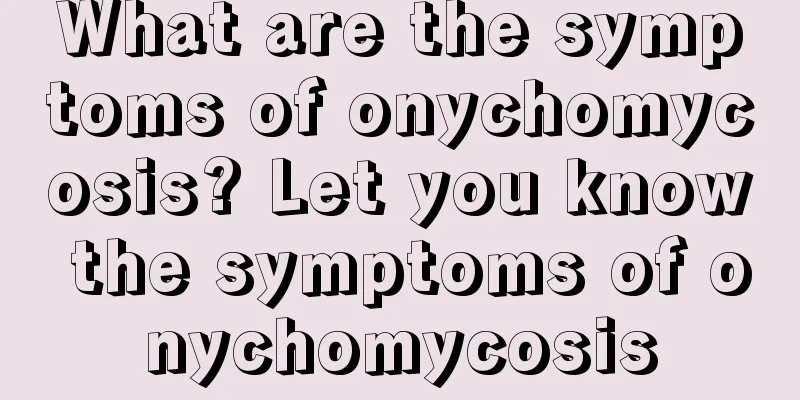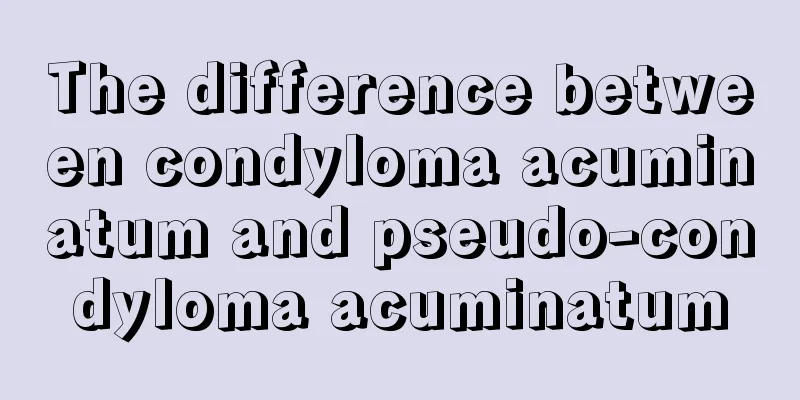What are the symptoms of onychomycosis? Let you know the symptoms of onychomycosis

|
Although onychomycosis is not a serious disease, once it occurs it can have a great impact on the patient, especially affecting the overall appearance of the person. After getting onychomycosis, it is not only easy to cause infection, but also causes the nails to change color, the surface of the nails to become uneven, and become particularly turbid. If you have onychomycosis, you must seek timely treatment. There are many treatment methods, the most common of which are topical and oral medications. 1. Color change: Fungal accumulation on or under the nail plate of a person with onychomycosis. Different fungal hyphae or spores themselves can be colored. The symptoms of onychomycosis are lesions and thickened nail plates that may also appear colored. In patients with onychomycosis, the keratin under the diseased nail falls off, allowing dirt to enter and take on color. When the deck is damaged and debris falls off, it will also take on color. The symptoms of onychomycosis may include dirty gray, brown, white, yellow, black, etc. 2. Uneven surface: The symptoms of this onychomycosis are due to the accumulation of keratin on the nail plate or under the nail plate, and the nail plate is damaged, making the surface of the nail plate rough, uneven, and dull. This unevenness may be either longitudinal or transverse. At the same time, it can also be understood that the main lesions of onychomycosis are under the nail plate. 3. The deck becomes cloudy Why is turbid onychomycosis also called "onychomycosis"? It is because after the fungus invades the nail plate or nail bed, a large number of fungal reproduction stimulates the accumulation of keratin, making the nail plate turbid and opaque, giving people a gray feeling, hence the name. 4. Separation: The thickened keratin of diseased nails tends to dry out, then slowly turns into powder and falls off from between the nail plate and the nail bed. Over time, the connecting part between the nail plate and the nail bed is hollowed out, separating the nail plate and the nail bed. Treatment of onychomycosis 1. Oral medication This method of treating onychomycosis is suitable for people who have multiple nails (toenails) affected at the same time. This method has long been used in clinical practice, has certain efficacy, and is convenient. However, because this type of drug must reach the nail plate where the fungus is parasitic to exert its antibacterial effect, it requires a large dosage, a long use time, has side effects, and is prone to relapse after discontinuation of the drug, it is not suitable as a routine treatment for onychomycosis. 2. Surgical nail removal Suitable for single onychomycosis. The affected nail can be removed under local anesthesia. This method of treating onychomycosis causes large wounds, bleeding, and is prone to infection. The operation generally causes more pain and is prone to recurrence of infection. Since it only treats the symptoms and not the root cause, it is rarely used in clinical practice. Moreover, patients with heart disease, hypertension, diabetes, etc. are not suitable for surgical treatment. 3. Topical therapy Topical treatments are safer, generally painless and have no side effects, and are the preferred treatment for onychomycosis. Depending on the different medications, soaking, topical application, and packing and scraping are all common methods for treating onychomycosis. |
<<: What are the treatments for sphenoid sinusitis
>>: What is the most effective way to remove dampness?
Recommend
Is it better to wash your hair in the morning or at night?
Hair, like other parts of the body, is constantly...
What soup can reduce internal heat
Whenever the weather is hot, the most obvious fee...
There is a crack in my front teeth
Some people's teeth are very sensitive and th...
What are the early symptoms of a brain tumor?
The damage caused by brain tumors is quite seriou...
Are there any dangers of nose thread carving
Thread-carving rhinoplasty is a common cosmetic m...
Talcum powder shelf life
In life, many people like to use some talcum powd...
Can I drink white wine if I have a bad stomach?
Liquor is indispensable when entertaining guests,...
Tips for testing the authenticity of honey
We all know that there are many kinds of honey so...
Specific medicine for treating tinea manuum
People suffering from tinea manuum are greatly af...
What are the taboos of wolfberry?
Lycium barbarum is a very good thing. It is good ...
What are the symptoms of kidney deficiency in the eyes?
In daily life, many people suffer from kidney def...
What causes itchy eye sockets
Itchy eye sockets may be caused by allergies, exc...
What are the good methods of TCM to treat lung cancer? A complete collection of TCM remedies for treating lung cancer
Traditional Chinese medicine treats both the symp...
How much does it cost to treat hamartoma
How much does it cost to treat hamartoma? This is...
Wisdom tooth cracked
Some people grow wisdom teeth in their twenties, ...









